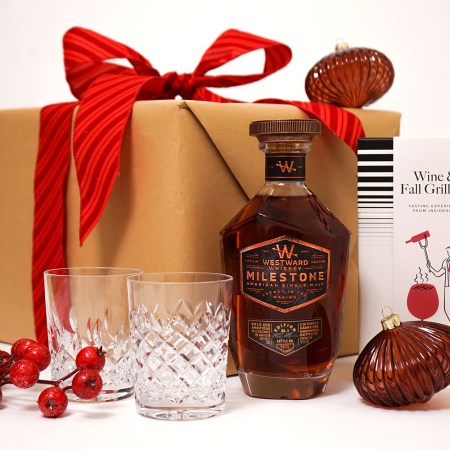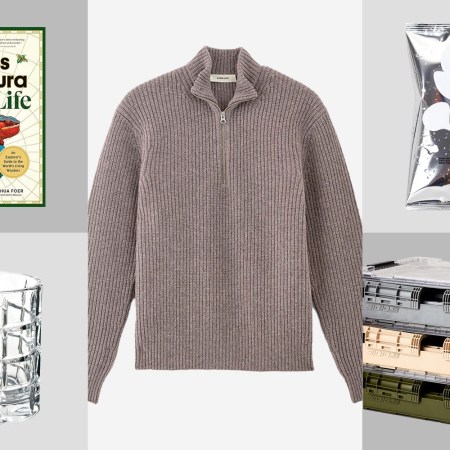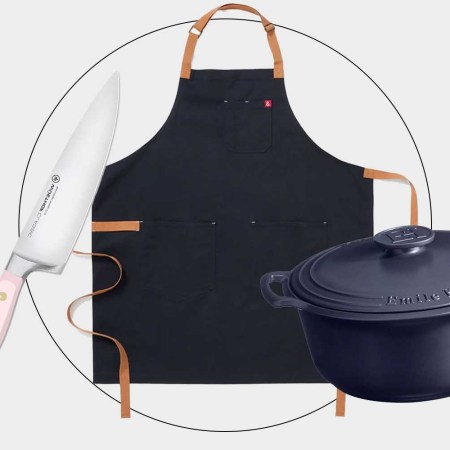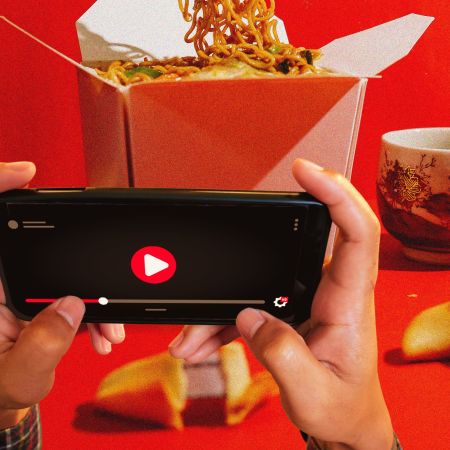Part restaurant, part arcade, part mall, and part theme park, Wall Drug in South Dakota is a lot of things, but subtle isn’t one of them. For hundreds of miles in every direction surrounding this sleepy town-turned-roadside spectacle in western South Dakota, quirky billboards tout the splendors of Wall Drug, a drug store that’s bloomed into a full-blown tourist attraction for free ice water, dirt-cowboy boots, frosted doughnuts and animatronic dinosaurs.
Located just outside of Badlands National Park, and an easy drive from the road trip mecca that is the Black Hills, the once-dusty town of Wall has come a long way from its origins as a drug store way back in 1931. Nowadays, the town teems with tourists — 2 million of them annually — stopping to cash in on that free ice water, pray in the chapel, straddle a giant jackalope and chow down on hot beef sandwiches slathered in gravy.
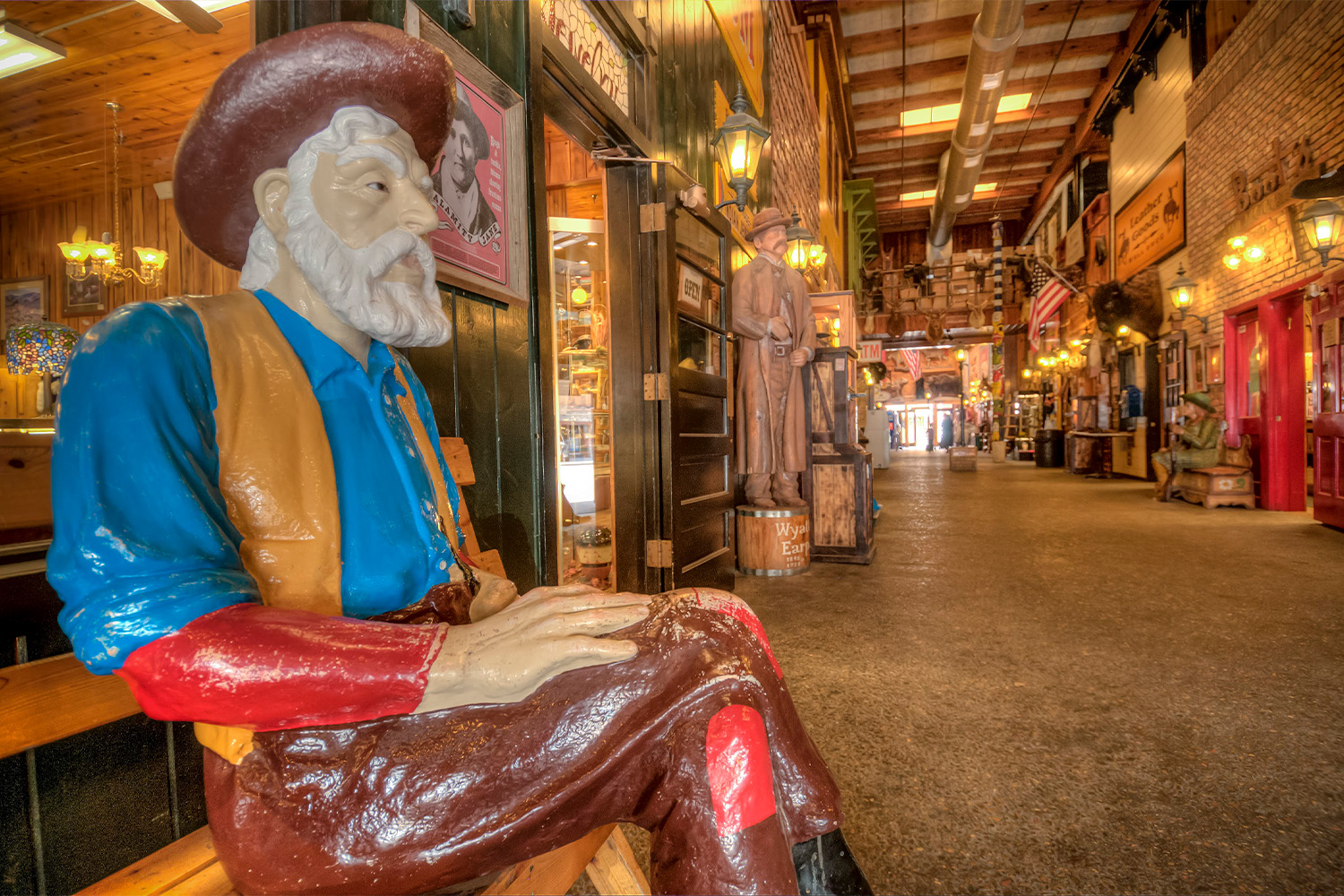
It all started with ice water
Much like caves and glaciers, Wall Drug was formed by water. Well, basically. As the name implies, the business began as a drug store owned by Ted and Dorothy Hustead in 1931, in a tiny town that served as an afterthought stopover along the Chicago/Northwestern rail line in the early 1900s, mainly for passengers en route to explore the Badlands up the road.
As road construction opened new byways through the national park, it brought more travelers through Wall, opening the door for the Husteads to exercise their entrepreneurial skills. By 1930, with Ted Hustead fresh out of pharmacy school, the family bought an old drug store in Wall, re-branded, and got into the thriving South Dakota drug trade. The only problem was, in a town of barely a few hundred residents and seasonal visitation to the Badlands that ebbs and flows dramatically, pharmaceuticals weren’t exactly a high priority for most locals.
The first few years as a pharmacy were a struggle for the Husteads, who ran the store and lived in a back room with their son Billy. Even then, they realized the power of marketing and PR, so they took it into their own hands to promote the business and attract customers — rather than rely on the periodic vagabond to wander in looking for Aspirin. At whit’s end in 1936, Dorothy began hand-painting signs with the cheery — if not grammatically confusing — phrase: “Get a soda/get a beer/turn next corner/just as near/to Highway 16 and 14/free ice water/ Wall Drug.” Placing the sign on a prominent stretch of Route 16, the jingle proved an instant success, with passersby pulling over for free ice water in the scorching Badlands heat. Over time, the business focus shifted further away from drugs and more towards other vices, like doughnuts and beer.
Seeing such success with one sign, the Husteads began making more and more, eventually spreading them out across South Dakota, into neighboring states, and even as far away as London, where Ted had the zany idea to prop a sign in the Underground while on vacation, directing travelers to Wall Drug 5,160 miles away. To this day, as signs disperse and Wall Drug has grown from a modest pharmacy into a bustling tourist attraction, all signs and billboards are still hand-painted — and ice water is still free.
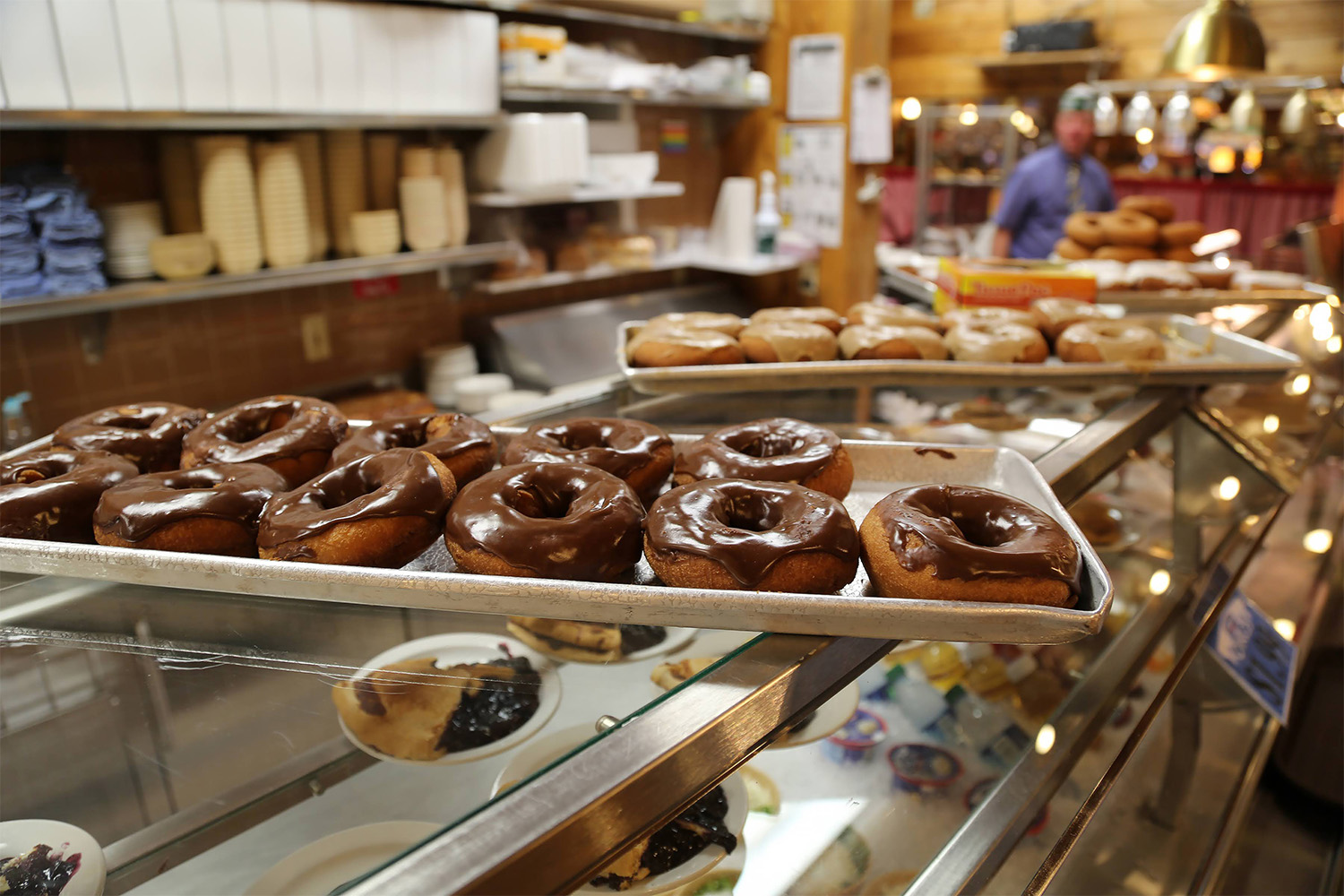
Time to make the doughnuts
A far cry from its earlier days as a straightforward pharmacy, you can get a lot more at Wall Drug nowadays than Ibuprofen and sunscreen. As visitation steadily increased throughout the mid-1900s, the Husteads branched off the original drug store by constructing an adjoining mall and outfitting it with shops, cafes, Native American art, an arcade, wood carvings of wild west figures and a chapel that looks like the Kill Bill church in miniature.
Today, the Wall Drug complex clocks in at 50,000-sq.-ft. of western whimsy, with stores like Hole in the Wall Bookstore, Minnetonka Moccasins and Calamity Jane’s Jewelry Emporium selling everything from Black Hills gold and real-deal leather cowboy boots to gems and fossils. The Apothecary Shop and Pharmacy Museum is a old-timey replica of the original drug store from 1931, and it still operates as a working pharmacy for all your over-the-counter needs.
Since travelers likely wanted more than ice water, the Husteads also added more food and beverage options as well, anchored by the massive Western Art Gallery Restaurant, which you may recognize as the place where Frances McDormand scrubbed the kitchen in Nomadland. The rustic wood-filled space looks like a frontier-era mess hall, with seating for 500 and oil paintings all over the walls — amassed by the Husteads over the span of 50 years, the gallery is the largest privately owned collection of western art in the country. It’s also the main stop for buffalo burgers, hot beef sandwiches and fresh pie, while the Soda Fountain Ice Cream Shop slings sundaes, shakes and malts.
The most famed snack, though, is the doughnuts. Frills-free and pure Americana, they’re cake doughnuts that are fried on both sides until golden brown, to achieve optimal crisp exterior and a fluffy interior akin to shortcake. They’re delicious plain, especially when dunked in a cup of 5-cent coffee, or you can get them glazed with chocolate, vanilla or maple frosting.
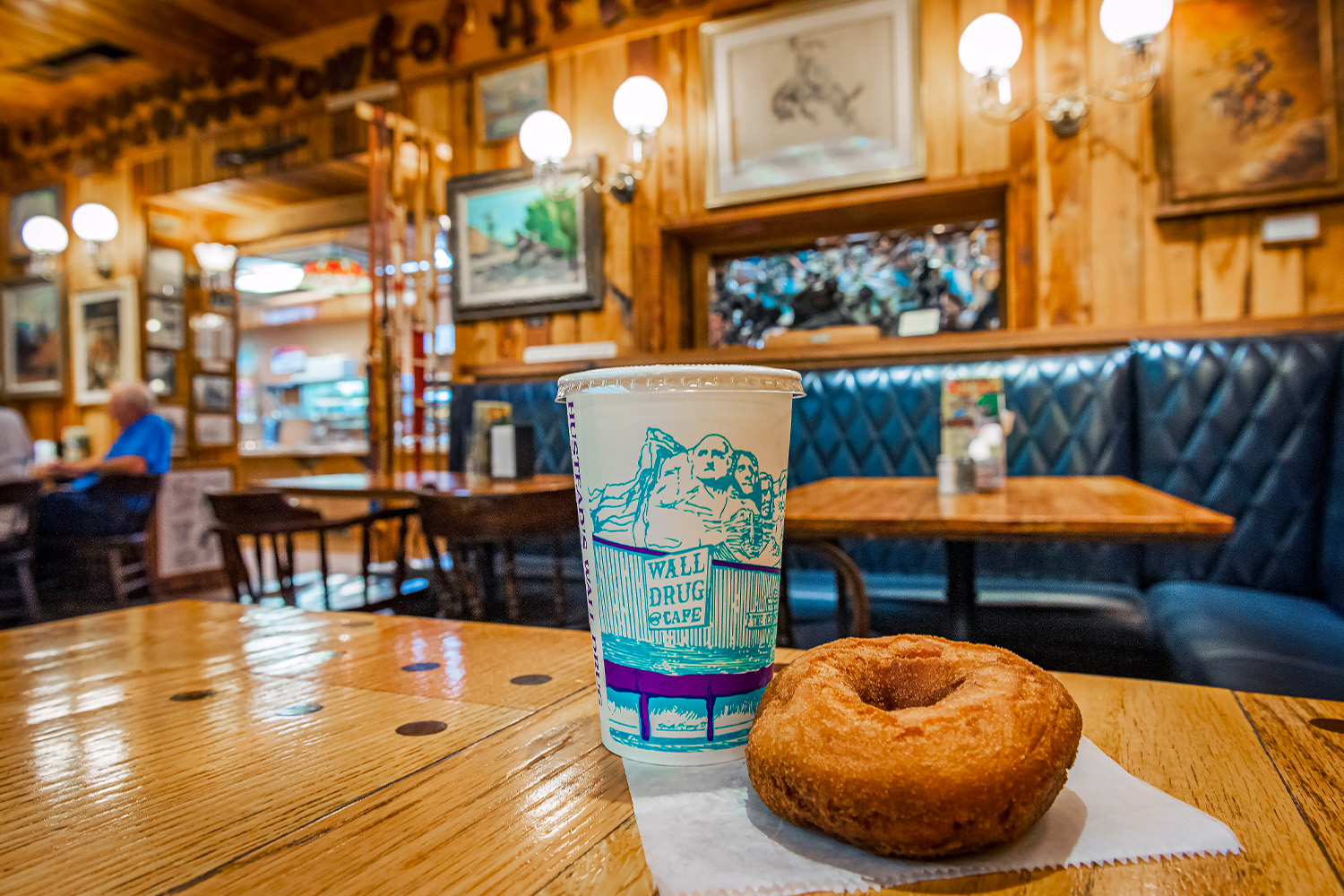
It’s a jungle out there
As if the quirky western motif and guerrilla marketing billboards weren’t outside-the-box enough, what elevates Wall Drug into a singular stratosphere as a tourist destination is its oddball assortment of animatronics and giant figurines.
With its position in the midst of an all-American road trip hot spot, Wall Drug grew to become more and more of a family-friendly destination in its own right. Along with familiar comfort food and souvenir shops, the town filled in with some whimsical attractions to thrill the kids — and the young at heart who don’t take themselves too seriously for a jackalope photo moment. Said jackalope is the star attraction in Wall’s outdoor yard, a six-foot jackrabbit with reindeer-like horns that visitors can sit on and pose for pics. There’s also an 80-foot brontosaurus, and indoors by the shooting gallery and arcade, an animatronic T-Rex that periodically roars and shakes its head from behind a fence, like something out of a prehistoric Rainforest Cafe.
The dinosaur focus makes sense, considering the abundance of fossils found in the nearby Badlands. For something more authentic than a ratchet Rex, check out Wall’s paleontology store, where folks can fiddle with fossil replicas and dig for gemstones and fake bones. Because of course a place like Wall Drug — a nearly century-old pharmacy-turned wonderland of hot beef sandwiches, jackalopes, and Black Hills gold — would have a paleontology store.
This article was featured in the InsideHook newsletter. Sign up now.

